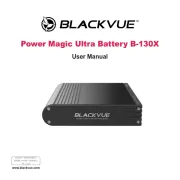Tripp Lite PV100USB Bedienungsanleitung
Tripp Lite
Batterie
PV100USB
Lies die bedienungsanleitung für Tripp Lite PV100USB (4 Seiten) kostenlos online; sie gehört zur Kategorie Batterie. Dieses Handbuch wurde von 4 Personen als hilfreich bewertet und erhielt im Schnitt 4.9 Sterne aus 2.5 Bewertungen. Hast du eine Frage zu Tripp Lite PV100USB oder möchtest du andere Nutzer dieses Produkts befragen? Stelle eine Frage
Seite 1/4

Owner’s Manual
PowerVerter
®
Portable
AC Inverters with USB Charging
Models: PV100USB, PV200CUSB, PV200USB, PV400USB
Introduction
Congratulations! Your new PowerVerter Portable AC Inverter with USB Charging will give you years of
reliable, carefree service. Use it to convert DC (battery) power into 110V AC (household) power to run
a variety of electronics: tablets, smartphones, laptop computers, game systems, small TVs/DVD players
and more! The Inverter’s PWM (Pulse Width Modulated) sinusoidal wave is suitable for almost all loads.
1111 W. 35th Street, Chicago, IL 60609 USA • www.tripplite.com/support
Copyright © 2015 Tripp Lite. All rights reserved.
PROTECT YOUR INVESTMENT!
Register your product for quicker service and ultimate peace of mind.
You could also win an ISOBAR6ULTRA surge protector—a $100 value!
www.tripplite.com/warranty
Important Safety Instructions
SAVE THESE INSTRUCTIONS!
This manual contains important instructions and warnings that should be followed during
the installation, operation and storage of all Tripp Lite Inverters.
Warning!
• Use of this equipment in life support applications where failure of this equipment can reasonably
be expected to cause the failure of the life support equipment or to significantly affect its safety
or effectiveness is not recommended. Do not use this equipment in the presence of a flammable
anesthetic mixture with air, oxygen or nitrous oxide.
• Do not operate your Inverter near flammable materials, fumes or gases.
Caution!
• Since the Inverter requires adequate ventilation during operation, do not block fan or cooling vents
or cover the Inverter, and do not operate near vehicle heating vents or in direct sunlight. Keep the
Inverter dry at all times and disconnect when not in use.
• Turn OFF connected equipment before starting your engine. DO NOT plug a surge protector, line
conditioner or UPS system into the Inverter. If you attach AC extension cords, use the heaviest
practical gauge.
• Before connecting a battery charger or adapter, check its manual to make sure that the Inverter’s
specifications (including output waveform) fall within its recommendations.
• Do not allow objects to contact the DC input terminals or battery For PV400USB model:
terminals. Do not short or bridge these terminals together. Serious personal injury or property
damage could result.
15-09-514-933411-EN-V2.indd 1 10/21/2015 11:49:08 AM

2
Operation
Step 1: Plug Inverter into vehicle lighter/accessory outlet.
PV400USB Model Only: This unit contains a pair of DC input terminals to connect a 3 ft. cigarette
lighter plug cable or optional 3 ft. battery cable with alligator connectors that directly attaches to a
battery’s DC terminals.
Note: Always connect red connectors to red battery terminals (POS, P, +) and black connectors to black battery
terminals (NEG, N, -). For unmarked terminals, the positive post usually has a larger diameter than the negative post.
When disconnecting the charger, reverse the order of the connecting steps.
Step 2: Turn on Inverter.
Step 3: Plug equipment into the Inverter.
Determine your equipment’s total wattage.* Do not connect more watts than your Inverter’s Output
Power (Maximum Continuous Watts); see Specifications. See back page for typical equipment
runtimes. Also see back page for important note concerning the limitations of vehicle electrical
systems.
* Wattage ratings are usually listed in equipment manuals or on nameplates. If your equipment is rated in amps,
multiply that number times AC utility voltage to determine watts. (Example: a ¼ in. drill requires 2½ amps. 2½ amps
× 120 volts = 300 watts.)
Maintenance
Your Inverter requires no maintenance and contains no user-serviceable parts (except for replaceable
DC fuses, where applicable).
Please check the following before sending the Inverter in for warranty replacement:
Symptom Possible Cause Correction
Inverter does not turn
ON when power switch is
turned ON.
Automatic Inverter shutdown due
to low battery voltage (<10V).
Turn Inverter OFF and start engine
to recharge vehicle battery. Only use
Inverter with engine running.
Automatic Inverter shutdown due
to output overload.
Turn Inverter OFF and remove
overload by unplugging high-wattage
devices. Load should not exceed
your Inverter’s maximum continuous
output power (see Specifications).
Blown fuse. Replace fuse with standard
automotive fuse of identical
amperage, where applicable (see
Specifications).
Inverter is unable
to power connected
equipment.
Battery running low. Low battery
voltage reduces Inverter power
output.
Turn Inverter OFF and start engine
to recharge vehicle battery. Only use
Inverter with engine running.
Connected equipment load
exceeds Inverter’s maximum
continuous output power.
Note: Fault LED will illuminate during
an overload (PV200USB
& PV400USB only).
Turn Inverter OFF and remove
overload by unplugging high-wattage
devices. Load should not exceed
your Inverter’s maximum continuous
output power (see Specifications).
Connected equipment
experiences audio/video
distortion.
Loose connections. Check and secure all connections.
Audio/video interference. Reposition equipment antennas and
Inverter.
Troubleshooting
15-09-514-933411-EN-V2.indd 2 10/21/2015 11:49:08 AM

3
Specifications
Model: PV100USB PV200CUSB PV200USB PV400USB
Output Power
(Maximum Continuous
Watts):*
100 200 200 400
Output Power
(Peak Watts):**
200 400 400 800
Input Voltage (DC): 12V nominal
(10-15V)
12V nominal
(10.5-15V)
12V nominal
(10-15V)
12V nominal
(10-15V)
Output Voltage (AC)/
Frequency:
110V / 60 Hz.
nominal
110V / 60 Hz.
nominal
110V / 60 Hz.
nominal
110V / 60 Hz.
nominal
Output Waveform: PWM Sine Wave PWM Sine Wave PWM Sine Wave PWM Sine Wave
Low Battery Voltage
Shutdown (Volts):
10V 10V 10V 10V
AC Outlets: 1 2 1 2
USB Ports: 1 x 2.1A,
1 x 1A
1 x 2.1A,
1 x 1A
1 x 2.1A,
1 x 1A
1 x 2.1A,
1 x 1A
Circuit Protection (DC
Overload):
10-amp fuse
(internal) ***
20-amp fuse
(external) ***
20-amp fuse
(external) ***
N/A
* Maximum output power (continuous or peak) only available when vehicle battery is properly charged. Run vehicle
engine often to maintain proper charge. ** Peak Output Power is instantaneous. *** Replace with a fuse of equal
amperage rating only. Higher-rated fuses should not be used.
Typical Runtimes Before Battery Recharge
Although you can operate your Inverter with your vehicle engine off, best results are usually achieved
with the engine running. Since the Inverter converts electrical energy (and doesn’t produce it),
the Inverter’s performance is relative to the condition of your vehicle’s electrical system (battery,
alternator and wiring). If other loads (air conditioner, heater, lights, etc.) are also using power, you
may get less runtime.
With Typical Compact
Vehicle (4 cylinder)
Battery, Alternator &
Wiring
With Typical Mid-Size
Vehicle (6 cylinder)
Battery, Alternator &
Wiring
With Typical Full-Size
Vehicle (8 cylinder)
Battery, Alternator &
Wiring
Models: PV100USB, PV200CUSB, PV200USB
1/2 Load
(engine on/engine off)
continuous/4-6 hrs. continuous/6-8 hrs. continuous/8-12 hrs.
Full Load
(engine on/engine off)
continuous/2-3 hrs. continuous/3-4 hrs. continuous/4-6 hrs.
Model: PV400USB
1/2 Load
(engine on/engine off)
continuous/1-2 hrs. continuous/2-3 hrs. continuous/3-6 hrs.
Full Load*
(engine on/engine off)
continuous/30 min.-1
hr.
continuous/1-2 hrs. continuous/2-3 hrs.
Vehicle Electrical System Limitations
Due to the limitations of certain vehicles’ 12V DC lighter/accessory outlet electrical systems, you
may not be able to continuously run a full load from your inverter. If you regularly blow fuses, it
may indicate your vehicle is not adequately wired to support your Inverter as it is designed. In this
case, consult vehicle manufacturer recommendations for rewiring from the fuse block or battery
with appropriate wiring (10 - 12 gauge) and fusing (at least 40 amp). All standard vehicle accessory
outlet electrical systems can support full loads for PV100USB models without any modifications.
PV100USB Connection Warning
The extra 12V DC CLA socket on the PV100USB is intended for low voltage electronic devices only
(smartphones, MP3 players, etc.). DO NOT plug another inverter into this port. DO NOT attempt to
use as a cigarette lighter.
15-09-514-933411-EN-V2.indd 3 10/21/2015 11:49:08 AM
Produktspezifikationen
| Marke: | Tripp Lite |
| Kategorie: | Batterie |
| Modell: | PV100USB |
| Breite: | 41 mm |
| Tiefe: | 83 mm |
| Gewicht: | 240 g |
| Höhe: | 100 mm |
| Verpackungsbreite: | 46 mm |
| Verpackungstiefe: | 140 mm |
| Verpackungshöhe: | 105 mm |
| Paketgewicht: | 370 g |
| Warentarifnummer (HS): | 8504.40.9570 |
| Ursprungsland: | China |
| Menge pro Packung: | 1 Stück(e) |
| Kabellänge: | 0.9 m |
| Gehäusematerial: | Kunststoff |
| Anzahl Produkte pro Versandkarton: | 24 Stück(e) |
| Gewicht Versandkarton: | 9130 g |
| Länge des Versandkartons: | 445 mm |
| Breite des Versandkartons: | 215 mm |
| Höhe des Versandkartons: | 225 mm |
| Netzteiltyp: | Drinnen |
| Anzahl der USB-Anschlüsse: | 2 |
| USB-Version: | 2.0 |
| Ausgangsstrom: | 2.1 A |
| Ausgangsspannung: | 120 V |
| Eingangsspannung: | 12 V |
| Nachhaltigkeitszertifikate: | RoHS |
| Eingangsstrom: | 12 A |
| Eingangsfrequenz: | - Hz |
| Starkstromtyp: | DC1-to-DC2 |
| Hauptkarton GTIN (EAN/UPC): | 10037332187885 |
| Anzahl der AC-Ausgänge: | 1 AC-Ausgänge |
| Output Frequenz: | 60 Hz |
| Kapazität: | 100 W |
| Ausgang Spannung (Note): | 120 |
Brauchst du Hilfe?
Wenn Sie Hilfe mit Tripp Lite PV100USB benötigen, stellen Sie unten eine Frage und andere Benutzer werden Ihnen antworten
Bedienungsanleitung Batterie Tripp Lite
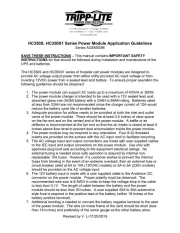
1 September 2025
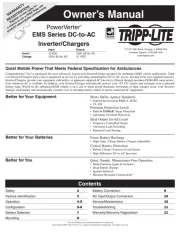
1 September 2025
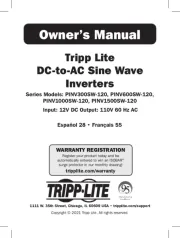
1 September 2025
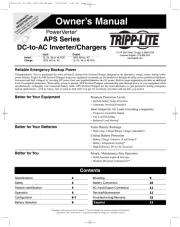
1 September 2025
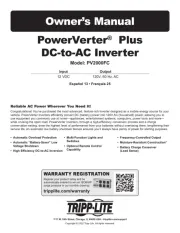
1 September 2025
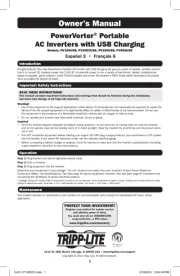
1 September 2025
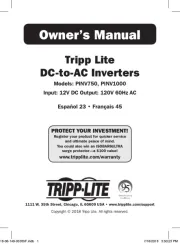
1 September 2025
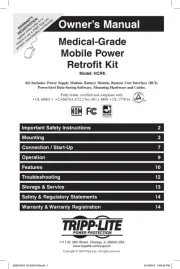
1 September 2025
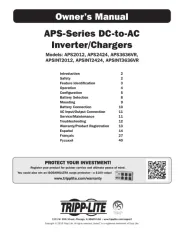
1 September 2025
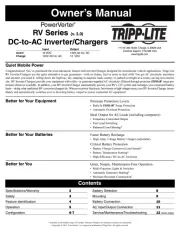
1 September 2025
Bedienungsanleitung Batterie
- Ultron
- Florabest
- Black And Decker
- Canon
- AXITEC
- FeinTech
- Targus
- For_Q
- Scosche
- CyberPower
- Powerplus
- Sandberg
- Rollei
- Conrad
- Blaupunkt
Neueste Bedienungsanleitung für -Kategorien-

1 September 2025
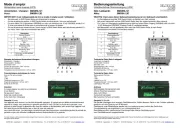
30 August 2025

30 August 2025
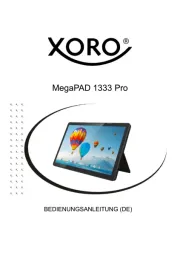
29 August 2025

28 August 2025
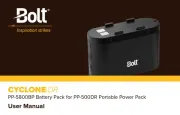
27 August 2025

27 August 2025
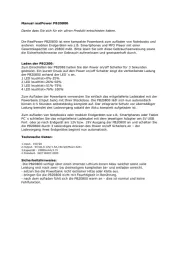
26 August 2025
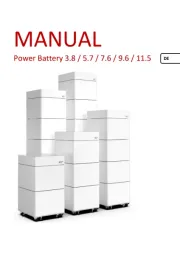
25 August 2025
